
Before You Start, Get Checked
Diabetes affects millions of people. The main types of diabetes are Type 1 diabetes,Type 2 diabetes, and gestational diabetes. Type 1 diabetes occurs when the body is unable to make insulin due to an autoimmune disease where the body's immune system attacks insulin-producing cells in the pancreas. Type 2 diabetes is a common metabolic disorder that occurs when the body produces insulin, but does not use it effectively. Gestational diabetes occurs in pregnant women. People with diabetes manage their condition effectively in different ways by making lifestyle changes. A healthy diet and exercise are important to managing diabetes. Talk to your physician before embarking on an exercise program to better understand your limitations, if any. Your doctor may also provide valuable suggestions on the duration of a program.
- Important notification about information and brand names used in this slideshow!
- Photo courtesy of New Media Ba by Picasa : picasaweb.google.com/104919940046622069790/Medicina#5586467606569682114
- diabetes.webmd.com/peripheral-neuropathy-8/slideshow-managing-diabetes-with-exercise
- http://www.nlm.nih.gov/medlineplus/magazine/issues/fall12/articles/fall12pg12.html
- http://www.uhc.com/source4women/health_topics/diabetes/control_diabetes_with_exercise.htm
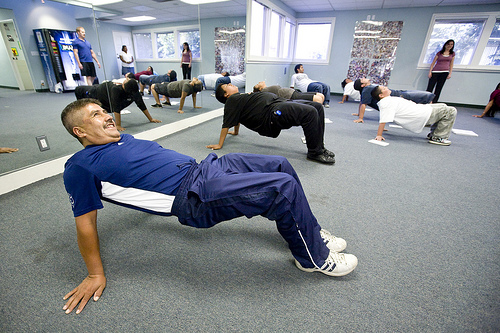
Slow or Prevent Diabetes Nerve Damage
Diabetes nerve damage is called diabetic neuropathy. It mostly affects the nerves in the legs and feet. Symptoms may range from pain and numbness in the legs and feet to problems in other organ systems such as the digestive system, urinary system, and respiratory system. You can prevent diabetic nerve damage or slow the progression of symptoms by staying active daily. Maintaining a healthy weight and engaging in daily activities improves blood flow and keeps blood sugar under control. Engage in moderate exercise for about 30 minutes at least five times a week. Consult your doctor before you begin an exercise regimen. If you have severe diabetes nerve damage, your doctor may recommend non-weight bearing activities such as swimming or bicycling.
- Important notification about information and brand names used in this slideshow!
- Photo courtesy of heacphotos by Flickr : www.flickr.com/photos/heacphotos/2678070006/
- diabetes.webmd.com/peripheral-neuropathy-8/slideshow-managing-diabetes-with-exercise
- http://www.mayoclinic.com/health/diabetic-neuropathy/ds01045/method=print
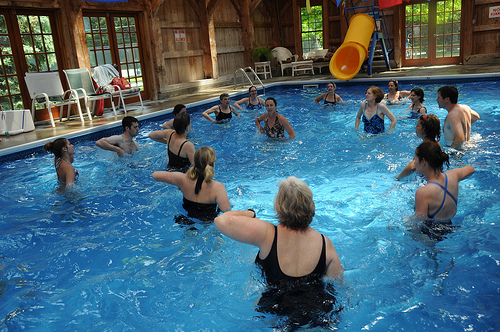
Low-Impact Exercise
If you suffer from diabetes nerve pain or diabetic neuropathy, your legs, feet, arms and hands may be painful and restricting your activities. You may want to avoid physical activities and exercise. Research has shown that exercise can slow the progression of nerve damage caused due to diabetes. Controlled blood sugar, a healthy weight, and staying active will keep all your symptoms in check and not diminish your quality of life. Low-impact or non-weight bearing exercises are the best exercise for your painful joints. Some low-impact exercises that you can practice are swimming, water aerobics, yoga, cycling, Tai chi, etc. Any exercise that you can do in the water is beneficial because water supports your body and reduces nerve pain.
- Important notification about information and brand names used in this slideshow!
- Photo courtesy of Scott Ableman by Flickr : www.flickr.com/photos/ableman/2601855745/
- diabetes.webmd.com/peripheral-neuropathy-8/slideshow-managing-diabetes-with-exercise
- http://www.americandiabetes.com/living-diabetes/diabetes-fitness-articles/five-tips-exercising-diabetic-neuropathy

Build Your Balance
A safe and effective exercise regimen for diabetic nerve pain depends on the severity of neuropathic symptoms. A combination of different exercises is a very helpful approach to ease your painful symptoms. Muscle wasting or muscle paralysis can occur due to damage to the motor nerves. It is likely that you will experience problems with balance due to diabetic neuropathy. Balance exercises can help to stabilize the loss of sensation in your feet. If you are worried about falling while doing balance exercises, stand close to a wall or table for support. Balance training helps to overcome your unsteadiness due to pain and weakness in the joints. You can do hip flexion, hip extension, and side leg raise exercises with standing at a table or kitchen counter.
- Important notification about information and brand names used in this slideshow!
- Photo courtesy of Local photos by Picasa : picasaweb.google.com/lh/view?q=stand+up+chair&uname=109008901828086469253&psc=G&filter=1#5728065403516701426
- diabetes.webmd.com/peripheral-neuropathy-8/slideshow-managing-diabetes-with-exercise
- http://forecast.diabetes.org/nerve-feb2013
- https://www.foundationforpn.org/livingwithperipheralneuropathy/exerciseperipheralneuropathy.cfm

Start Slow
You may be reluctant to engage in physical exercise due to fear of worsening symptoms. To make it easy for you, start your exercise regimen with short periods of exercise for 10 minutes and gradually increase the time to 30 minutes. You can divide your 30-minute goal by engaging in different activities during the day. The American Diabetes Association's recommendations are to engage in physical activities for at least 30 minutes five days a week. Some household chores such as gardening, yard work, and housework such as vacuuming are considered equivalent to aerobic activity. Try to mix up your exercise regimen by incorporating walking, swimming, etc. Getting a buddy to exercise with you will keep you motivated, and you will look forward to your daily routine with interest.
- Important notification about information and brand names used in this slideshow!
- Photo courtesy of isha kohli by Picasa : picasaweb.google.com/lh/view?q=diabetes+exercise&uname=109008901828086469253&psc=G&filter=1#5813601655027437570
- diabetes.webmd.com/peripheral-neuropathy-8/slideshow-managing-diabetes-with-exercise
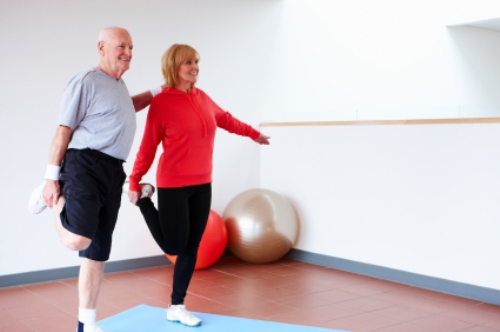
Balance On One Leg
One of the most effective balance exercises to regain steadiness is balancing on one leg or standing balance. This can be done standing next to the kitchen counter, a table or any stable object. You can try to do this exercise while doing dishes or watching television. Stand at the table or kitchen counter and place your hands on the counter. Lift one foot off the floor and gradually move your hands away from the counter and try to maintain a steady balance as long as you can. Hold for 5 to 10 seconds and gradually lower your raised foot. Repeat this two to three times, and repeat each set three times a day.
- Important notification about information and brand names used in this slideshow!
- Photo courtesy of Elliot Diamond by Picasa : picasaweb.google.com/lh/view?q=one+leg+balance&uname=109008901828086469253&psc=G&filter=1#5698580629002417650
- diabetes.webmd.com/peripheral-neuropathy-8/slideshow-managing-diabetes-with-exercise
- https://www.foundationforpn.org/livingwithperipheralneuropathy/exerciseperipheralneuropathy.cfm

Practice Walking Heel To Toe
It is necessary to have good balance to manage daily activities such as climbing stairs. If you practice walking heel to toe, your balance will improve gradually. To walk heel to toe, line up the two feet directly one behind the other, your heel and toes in close proximity. Keep a slight bend in your knees and take a step while spreading out your arms. Place the heel of one foot directly in front of the toes of the other feet. Repeat the above steps at least three to four times. Repeat each set of heel to toe steps several times a day to improve balance and stability.
- Important notification about information and brand names used in this slideshow!
- Photo courtesy of Kashif John by Flickr : www.flickr.com/photos/kashifjohn/7122783085/
- diabetes.webmd.com/peripheral-neuropathy-8/slideshow-managing-diabetes-with-exercise
- http://go4life.nia.nih.gov/exercises/balance/heel-to-toe-walk
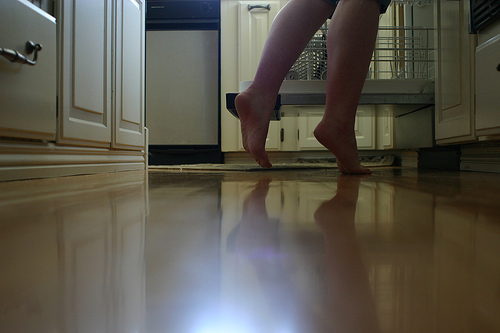
Tippy Toe
Tippy toe walking is seen in early childhood or in children with developmental delays. In adults, tippy toe helps to maintain balance and stay steady. To tippy toe, use a chair, table or stable object to support you. To begin, stand straight, with your knees slightly bent and arms to your sides. Transfer the weight of your body on to your toes and try to stay in this position by maintaining your balance. Use the chair back for support if needed. When you are able to balance yourself, walk ten steps straight forward. Then get back to the starting position and move ten steps backward. Repeat this exercise several times. You might feel unsteady in the beginning but with practice you will gain confidence in tippy toe walking. Your calves and ankle muscles are strengthened with tippy toe walking. The blood circulation to the legs and feet is increased reducing numbness and pain due to diabetic neuropathy.
- Important notification about information and brand names used in this slideshow!
- Photo courtesy of Ali by Flickr : www.flickr.com/photos/alikwilliams/495300125/
- diabetes.webmd.com/peripheral-neuropathy-8/slideshow-managing-diabetes-with-exercise
- http://www.justforhearts.org/diabetic-foot-exercises/
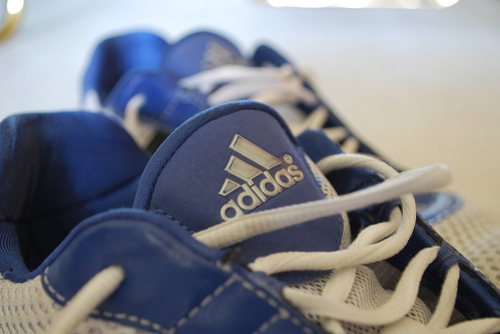
Athletic Shoes
Diabetic nerve pain or diabetic neuropathy causes loss of sensation in the extremities. Ill-fitting shoes can increase pain and discomfort if they rub the feet excessively. Constant discomfort may result in ulceration and foot injury. Shoes that fit properly allow good air circulation. Athletic shoes or well-designed diabetic shoes and insoles allows the skin to breath and encourages good blood circulation. When you are looking for athletic shoes for controlling painful symptoms of your diabetic foot, it is helpful to remember the following tips: The shoes must be made of a material that allows good breathing. Shoes made of fabric and sandals are ideal. Choose shoes that are wide in front and allow room for custom insoles. This will allow for toes to stay in their normal position and not get squeezed into ill-fitting shoes. Select shoe designs with minimal inner seams to prevent rubbing injuries, which can aggravate the foot's painful symptoms. It also reduces the occurrence of calluses. Look for shoes that are easily adjusted to fit with elastic bands to prevent the foot from sliding out.
- Important notification about information and brand names used in this slideshow!
- Photo courtesy of ertemplin by Flickr : www.flickr.com/photos/ertemplin/2525506113/
- diabetes.webmd.com/peripheral-neuropathy-8/slideshow-managing-diabetes-with-exercise
- http://www.informationaboutdiabetes.com/diabetes-management/diabetic-footcare/diabetic-shoes
- http://www.tanglewoodfootspecialists.com/faqs/why-do-diabetics-need-special-shoes.cfm
- http://voices.yahoo.com/diabetic-shoes-they-they-work-4259971.html

Blood Sugar And Exercise
Exercise can help maintain and control your blood sugar level. It also reduces your risk of heart disease and nerve damage due to diabetes. When you exercise, the demand for energy increases and glucose stored in the liver is released into the blood. As you continue with the exercise more glucose is used up from the blood causing low blood glucose or hypoglycemia. Even when you stop exercise, blood glucose continues to drop because the muscles try to replenish the lost glucose. It is ideal to check your blood glucose before and after exercise to manage it well. The safe range for exercise is between 100 and 250 mg/dL. If your blood sugar level is 250 mg/dL or higher, test for ketones in the urine. Ketones are produced during fat breakdown, and excessive ketones is a sign that your body has insufficient insulin to control your blood sugar. Exercising with high ketones in your blood causes ketoacidosis, which is a serious complication of diabetes requiring immediate medical attention.
- Important notification about information and brand names used in this slideshow!
- Photo courtesy of New Media Ba by Picasa : picasaweb.google.com/104919940046622069790/Medicina#5586469218363007170
- diabetes.webmd.com/peripheral-neuropathy-8/slideshow-managing-diabetes-with-exercise
- http://www.bd.com/us/diabetes/page.aspx?cat=7001&id=7516









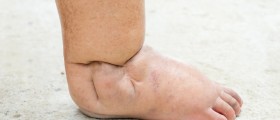








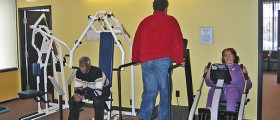
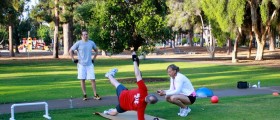




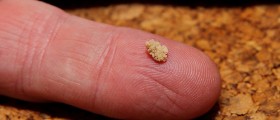


Your thoughts on this
Loading...